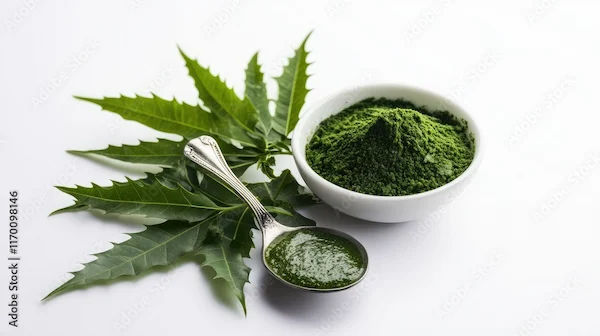How to Reduce Swelling in Knee Quickly?
Discover the hidden causes of knee swelling, their impact on mobility, and powerful strategies to reduce inflammation quickly and effectively.

Written by
Last updated on 3rd Jul, 2025
Knee swelling is the accumulation of excessive fluid around the knee joint, causing pain, stiffness, and a reduced range of motion. Many things, including injuries, arthritis, infections, or diseases such as gout, can cause it. Knee swelling can interfere with everyday life, whether from an exercise injury, an accident, or a chronic condition.
So, what’s a quick way to reduce the swelling and obtain long-term relief? Let’s talk about some effective solutions and remedies and what one can do to manage the swelling knee. Read on to discover the secrets to recovering faster from a knee injury!
Common Causes of Knee Swelling
Identifying the causes of the knee swelling is vital for proper treatment. Some of the usual causes are:
Injuries: Sports or accident-related trauma can cause such things as sprains, strains and fractures that, in turn, can cause inflammation and swelling.
Arthritis: Osteoarthritis and rheumatoid arthritis can lead to chronic inflammation and fluid accumulation in the knee.
Bursitis: Inflammation of the bursae (small fluid-filled sacs cushion joints) may cause localised swelling.
Infections: Septic arthritis or other infections can lead to severe swelling and need urgent medical treatment.
Gout is arthritis caused by uric acid crystals building up in the joint, causing sudden and intense swelling.
Immediate First Aid Measures for Knee Swelling
If the knee starts swelling, immediate action can help reduce discomfort and do away with some future problems. Here are some first-aid measures that can help contain the swelling immediately.
1. Rice Method: Rest, Ice, Compression, Elevation
For knee swelling management, the rice method is often advised as an initial first-aid plan:
Rest: To allow the knee to heal, avoid putting weight on it. If the pain persists, use crutches to avoid overstraining.
Ice: To reduce swelling and pain, use ice packs wrapped in a towel for 15-20 minutes every couple of hours. This narrows blood vessels, reducing inflammation and numbing the area.
Compression: To reduce swelling around the joint, apply an elastic bandage or compression sleeve. The bandage should be tight but not restrict circulation.
Elevation: Use pillows to prop the knee up above the level of the heart to help drain extra fluid from the joint.
2. Over-the-counter Medications
Nonsteroidal anti-inflammatory drugs (NSAIDs), such as ibuprofen (Advil) or naproxen (Aleve), can relieve pain and reduce inflammation related to knee swelling. Follow dosage recommendations, and contact a healthcare provider if symptoms continue.
Home Remedies for Reducing Knee Swelling
Alongside first aid, natural approaches can prove very helpful in soothing knee swelling and facilitating healing. Here are some steps that may help at home:
1. Herbal and Natural Treatments
Some natural treatments that may help reduce knee swelling include:
Turmeric: Recognized for its anti-inflammatory effects, turmeric can be taken as a supplement or sprinkled on food. A paste of turmeric powder and warm water can also be applied topically for relief.
Epsom Salt: The magnesium in Epsom salt nurtures the affected knee when added to warm water.
Turmeric: Its anti-inflammatory properties may be useful in alleviating swelling. Ginger tea or using chopped fresh roots in meals can help.
2. Dietary Changes to Reduce Inflammation
Including anti-inflammatory foods in the diet can promote overall joint health:
Omega-3 fatty acids: Found in fish like salmon, as well as in walnuts and flaxseeds, these fats have anti-inflammatory effects.
Fruits and Vegetables: Colorful fruits and vegetables, including berries and leafy greens, are high in inflammation-fighting antioxidants.
Whole Grains: Foods such as brown rice and quinoa offer fibre, which helps decrease inflammation.
Physical Therapy and Exercises for Knee Swelling
Movement of the knee, as well as targeted exercises, help in healing, avoid stiffness and support the knee. Here are some exercises to help you regain strength:
1. Exercises to Help Reduce Swelling in the Knee
After the swelling goes down, gentle movements can aid in restoring mobility:
Knee Swings: Sit at a high table with your left leg hanging. Swing your knee gently forward and back to assist movement without forcing the joint.
Straight Leg Lifts: Lying on your back, lift one straight leg with the other bent. This builds muscle without putting stress on the knee.
Heel Slides: Lie on your back and slide your heel toward your buttocks while your foot remains on the floor. This exercise increases flexibility without stressing the joints.
2. Importance of Physical Therapy
A physical therapist guides through the proper exercises for specific conditions and helps build strength around the knee without promoting unsafe healing practices. A physical therapist can also advise on proper techniques to prevent further injury.
When to Seek Medical Attention
If swelling of the knee is also associated with extreme pain, inability to bear weight, fever, or visible deformity, it is critical to have it evaluated, as there could be a serious underlying situation that warrants attention. To get to the bottom of the cause, a doctor may order imaging tests such as X-rays or MRIs.
For many, treatment can involve corticosteroid injections to relieve inflammation, while others may need to undergo surgery to treat conditions such as torn ligaments or cartilage damage. Timely medical treatment can prevent complications and promote correct healing.
Long-term Prevention Strategies for Knee Swelling
Long term strategies for protecting the joint and preventing excessive swelling in the knee include: Keeping a healthy weight, wearing the right footwear, and following a regular exercise routine may all contribute uniquely to preventing future swelling and injury.
Maintaining a Healthy Weight: Having extra weight puts stress on the knees and raises the chances of injuries and chronic conditions like arthritis. Keeping a healthy weight via balanced nutrition and exercise can help prevent this.
Wear Protective Gear and Suitable Footwear: Wearing the correct shoes whenever doing activities minimises the risk of injuring the knee, which makes it swollen. Wearing supportive shoes with adequate cushioning can even help absorb the shock, particularly during activities such as running or jumping.
Regular Exercise Routine: Low-impact activities, such as swimming or cycling, build the muscles surrounding the knee without putting undue stress on the joint. Isometric strengthening activities for the quadriceps and hamstrings are particularly useful for supporting the stability of the knee.
Alternative Treatments for Knee Swelling
Some alternative medicines provide relief for knee swelling using natural and non-invasive techniques. Here are some alternative effective treatments:
Acupuncture: Involves inserting thin needles at certain pressure points on the body to relieve pain as well as reduce inflammation.
Acupressure: Pressure applied to targeted areas of the body without needles to relieve swelling and discomfort.
Essential Oils: When diluted with a carrier oil and massaged into the swollen area, peppermint or eucalyptus oils can provide anti-inflammatory relief.
Importance of Rest and Recovery
The process of healing knee swelling takes time, and rest recovery is thus an essential part of this healing process. Here’s why balancing rest and activity can make a recovery faster:
Rest is important for the body to heal properly, therefore, any activity that proves to worsen knee pain should be avoided during the healing process.
It is important to monitor the body; if any movement causes pain, it should be stopped immediately.
Gentle activity is vital to avoid stasis and keep the body limber. Once the initial swelling has gone down, low-impact exercise, such as swimming or cycling, can be beneficial.
Conclusion
To keep that knee swelling in check, use a mix of first aid, home remedies, targeted exercises and long-term prevention techniques. Knowing the underlying cause of swelling and taking proactive steps can decrease discomfort and promote healing as well as joint health.
But, if symptoms are not improving or are getting worse, visiting a doctor is very important for effective diagnosis and treatment that gives lasting relief.
Consult Top General Physicians
Consult Top General Physicians

Dr. Md Yusuf Shareef
General Practitioner
8 Years • MBBS
Hyderabad
Apollo 24|7 Clinic, Hyderabad

Dr. Anshul Maheshwari
General Practitioner
5 Years • MBBS
Lucknow
Apollo 24|7 Clinic - Uttar Pradesh, Lucknow

Dr Summaiya Banu
General Practitioner
8 Years • MBBS
Hyderabad
Apollo 24|7 Clinic, Hyderabad
(150+ Patients)

Dr. Shubham Chauhan
General Practitioner
4 Years • MBBS
Lucknow
Apollo 24|7 Clinic - Uttar Pradesh, Lucknow

Dr. Immanuel Raj
General Practitioner
8 Years • MBBS. MBA (HHSM)
Visakhapatnam
Apollo 24|7 Clinic - Andhra Pradesh, Visakhapatnam

.webp)


